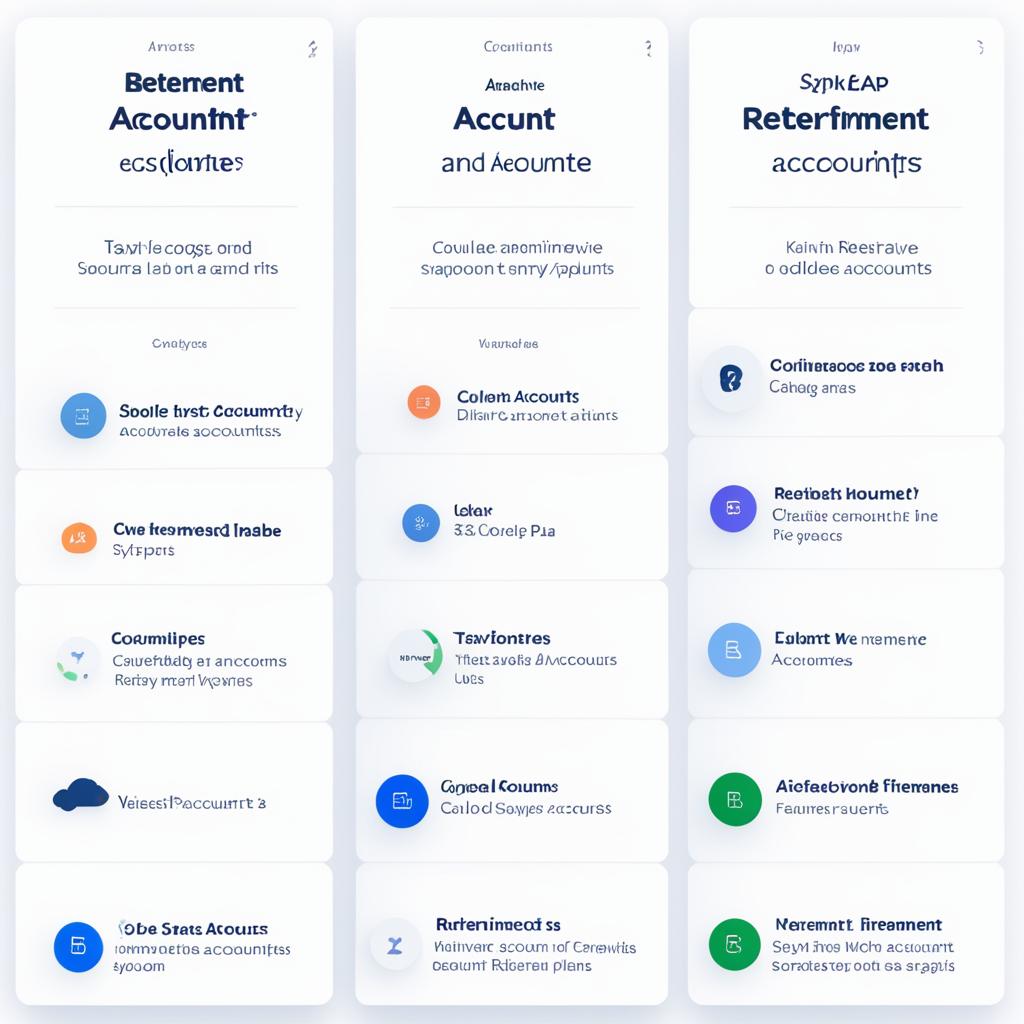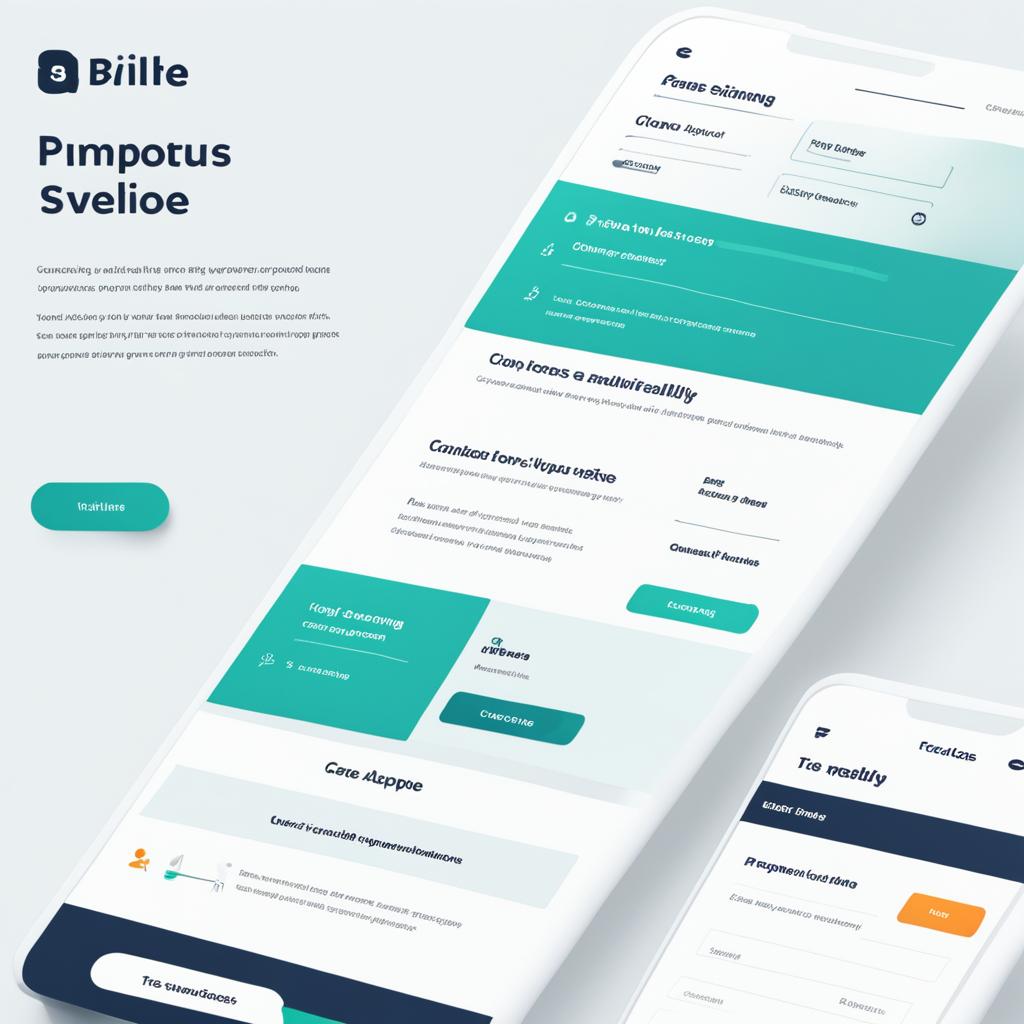When it comes to choosing a robo-advisor for your investments, Betterment and Wealthfront are two popular options. In this article, I will compare the two platforms to help you determine which one is best suited for your financial goals. We will consider factors such as account minimums, account management fees, investment portfolios, tax strategies, and more.
Key Takeaways:
- Betterment and Wealthfront are leading robo-advisors and investment platforms in the realm of online investing.
- They offer automated investing, financial planning, wealth management, and portfolio management services.
- Both platforms cater to passive investing strategies, making it easier for investors to grow their wealth over time with minimal effort.
- Account minimums, fees, portfolio customization, tax strategies, and additional features are significant factors to consider when choosing between the platforms.
- It is essential to align your investment goals, preferences, and needs with the strengths and weaknesses of each platform to make an informed decision.
Account Minimum and Fees
When considering robo-advisors like Betterment and Wealthfront, it’s important to understand the account minimums and fees associated with each platform. These factors can have a significant impact on your investment experience and should be carefully evaluated before making a decision.
Account Minimums
Betterment and Wealthfront both require a minimum investment for their automated investment accounts. Betterment has an account minimum of $500, which means you’ll need at least this amount to get started. On the other hand, Wealthfront also has a $500 account minimum for automated investment accounts.
However, Wealthfront offers a lower account minimum for certain account types. For cash accounts and the stock investing account, the minimum is only $1. This makes Wealthfront more accessible for individuals who may not have as much capital to invest initially.
Account Management Fees
Both Betterment and Wealthfront charge an account management fee for their automated investing services. Currently, both platforms have the same fee structure, with a management fee of 0.25% of your account balance.
It’s worth noting that Betterment does not charge a management fee for their stock investing account. This account allows you to buy and sell individual stocks without incurring any additional fees. This can be a significant advantage for investors who prefer a more hands-on approach to their portfolio management.
Investment Expense Ratios
When it comes to investment expense ratios, Wealthfront has an average expense ratio of 0.11% for portfolios that include the Wealthfront Risk Parity Fund. This fee is relatively low compared to the industry average and can help keep your investment costs down.
Both Betterment and Wealthfront offer tax-loss harvesting as a part of their investment strategies. This feature can help minimize your tax liability by offsetting gains with losses. It’s an important tool to consider if you’re looking to optimize your investment returns.
Overall, when comparing the account minimums, management fees, and investment expense ratios of Betterment and Wealthfront, it’s important to consider your individual investment goals, risk tolerance, and the level of hands-on involvement you prefer. By evaluating these factors, you can make an informed decision about which platform is best suited to help you achieve your financial objectives.
| Betterment | Wealthfront | |
|---|---|---|
| Account Minimum | $500 for automated investment accounts | $500 for automated investment accounts $1 for cash accounts and stock investing account |
| Account Management Fee | 0.25% for automated investing No management fee for stock investing account |
0.25% for automated investing 0.11% for portfolios with Wealthfront Risk Parity Fund |
| Tax Strategy | Tax-loss harvesting available | Tax-loss harvesting available |
Portfolio Mix and Customization
When it comes to portfolio options, both Betterment and Wealthfront offer a variety of choices to cater to different investment preferences. Let’s take a closer look at what each platform has to offer.
Betterment:
Betterment’s automated investment portfolios consist of ETFs from 12 asset classes. Recently, they have expanded their offerings to include sector-based ETFs and even two cryptocurrency trusts. This allows investors to diversify their portfolios across a wide range of industries and asset types.
Clients using Betterment also have the flexibility to customize their portfolios. They can add or delete specific ETF holdings, tailoring their investments to align with their personal preferences and investment goals. Additionally, if they prefer a more hands-on approach, clients can build their entire portfolio from scratch.
Wealthfront:
Wealthfront also offers automated investment portfolios that include ETFs from various asset classes. In addition to the traditional options, Wealthfront allows clients to customize their portfolios by adding socially responsible investment options or even individual stocks. This level of customization enables investors to align their portfolios with their specific values or preferences.
Furthermore, Wealthfront provides some unique portfolio options for their clients. They offer the Wealthfront Risk Parity Fund, which is available for taxable accounts. This fund utilizes a strategy known as smart beta, aiming to achieve a balanced risk across different assets.
Wealthfront has recently introduced a new offering called the Automated Bond Portfolio. This option provides investors with a portfolio that focuses on bonds, catering to those who wish to have more exposure to fixed-income securities.
Overall, both Betterment and Wealthfront provide investors with a range of portfolio options and customization features. Whether you prefer a diversified portfolio with ETFs from multiple asset classes or want to add your own personal touch to your investments, these platforms have you covered.
Types of Accounts Supported
When considering robo-advisors like Betterment and Wealthfront, it’s important to understand the types of accounts they support. Both platforms offer a wide range of account options to suit different investment needs and goals.
Firstly, both Betterment and Wealthfront support individual, joint, and trust taxable investment accounts. These accounts allow you to invest your money and potentially earn returns while also being subject to taxation.
Additionally, both platforms offer various retirement account options, including Roth, traditional, rollover, and SEP IRAs. These retirement accounts provide tax advantages and are specifically designed to help you save for your retirement years.
Furthermore, both Betterment and Wealthfront support 529 college savings plans. These plans are specifically designed to help you save and invest for your child’s education, offering potential tax benefits and investment growth.
Lastly, it’s worth mentioning that Betterment recently added a high yield cash account option. This allows you to earn a competitive interest rate on your cash holdings, providing a low-risk alternative to traditional banking accounts.
Overall, both Betterment and Wealthfront offer a comprehensive range of account options to cater to various investment needs, whether it’s for taxable investments, retirement savings, college savings, or cash management.
| Supported Accounts | Betterment | Wealthfront |
|---|---|---|
| Taxable Investment Accounts | ✓ | ✓ |
| Retirement Accounts | ✓ (Roth, traditional, rollover, SEP IRAs) | ✓ (Roth, traditional, rollover, SEP IRAs) |
| 529 College Savings Plans | ✓ | ✓ |
| High Yield Cash Account | ✓ | N/A |

Important Considerations:
- Both Betterment and Wealthfront provide a diverse range of account types to suit different investment needs.
- It’s essential to assess your financial goals and determine which accounts align with your investment strategies.
- Consider the tax implications, long-term savings objectives, and potential benefits offered by each account type.
- Understand the associated fees, tax strategies, and management aspects for each supported account.
Tax Strategies and Features
When it comes to tax strategies and features, both Betterment and Wealthfront offer robust options to help investors minimize taxes and maximize returns. Let’s take a closer look at what each platform has to offer.
Daily Tax-Loss Harvesting
Both Betterment and Wealthfront provide daily tax-loss harvesting for all taxable accounts. This strategy involves selling investments at a loss to offset capital gains and potentially reduce the tax burden. By implementing this strategy, investors can increase their after-tax returns and optimize their investment portfolios.
Stock Level Tax-Loss Harvesting
For investors with taxable accounts that have balances of $100,000 or more, Betterment offers an additional feature called stock level tax-loss harvesting. This advanced strategy allows investors to optimize tax savings even further by harvesting losses at the individual stock level.
TurboTax Integration
When it comes to tax filing, both Betterment and Wealthfront aim to make the process seamless. However, Betterment goes the extra mile by integrating with TurboTax. This integration allows Betterment clients to effortlessly import tax-loss harvesting data into TurboTax, simplifying the tax filing process and reducing the chances of errors.
In summary, both Betterment and Wealthfront offer comprehensive tax strategies and features to optimize tax savings for investors. Betterment’s stock level tax-loss harvesting and TurboTax integration are notable advantages for those looking for more advanced tax optimization options.
Account Setup and Ease of Use
Setting up an account with Betterment or Wealthfront is a breeze. Both platforms have user-friendly processes that require basic personal information and a questionnaire to assess your risk tolerance and investment goals. Whether you’re a first-time investor or an experienced one, getting started is simple and straightforward.
Once you’ve completed the initial setup, you’ll have access to a user-friendly interface that makes managing your account a breeze. Both Betterment and Wealthfront prioritize intuitive design, ensuring that navigating their platforms is a seamless experience. Whether you’re checking your portfolio performance, making deposits or withdrawals, or exploring investment options, the user interfaces of both platforms are designed to be easy to use and visually appealing.
But what if you have questions or need assistance along the way? Both Betterment and Wealthfront offer robust customer support options. You can reach out to their knowledgeable customer service teams via phone or email for prompt assistance. While neither platform offers dedicated human financial advisors, Betterment does have a premium tier that includes unlimited access to certified financial planners for an additional fee.
Testimonials
“I was pleasantly surprised at how easy it was to set up my account with Betterment. Their user interface is clean and intuitive, making it simple to manage my investments.”
– Sarah Thompson
“Wealthfront’s account setup process was smooth and hassle-free. I appreciated their prompt customer support when I had questions about my portfolio.”
– Mark Johnson
Both platforms prioritize user experience and customer satisfaction, ensuring that your journey as an investor is as seamless as possible.

Cash Management Options
When it comes to managing your cash, both Betterment and Wealthfront offer attractive options to help you make the most of your money. Let’s explore the cash management accounts provided by each platform.

Betterment
Betterment offers a high-interest checking account and a cash reserve account, giving you multiple options to park your cash and earn competitive interest rates. Here are some key features of Betterment’s cash management options:
- High-Interest Checking: With Betterment’s high-interest checking account, you can earn interest on your everyday cash while enjoying the convenience of a debit card for seamless transactions.
- ATM Fee Reimbursement: Say goodbye to those pesky ATM fees. Betterment reimburses ATM fees worldwide, making it easier for you to access your funds.
Wealthfront
Wealthfront also offers a cash management account called Wealthfront Cash, designed to help you optimize your cash flow and savings. Here are the key features of Wealthfront’s cash management account:
- High-Interest Checking: With Wealthfront Cash, you can earn a competitive interest rate on your checking account balance, ensuring that your money keeps growing.
- Debit Card: Wealthfront provides an ATM debit card for easy access to your funds and convenient cash transactions.
- Automated Transfers: Automate your savings journey by setting up recurring transfers from your cash management account to your investment account.
Both Betterment and Wealthfront understand the importance of managing your cash effectively and provide attractive features to help you maximize your earnings.
| Platform | Cash Management Account Options | Key Features |
|---|---|---|
| Betterment | High-Interest Checking Account Cash Reserve Account |
High-interest earnings ATM fee reimbursement |
| Wealthfront | Wealthfront Cash | High-interest earnings ATM debit card Automated transfers |
Additional Features and Tools
When it comes to managing your finances and planning for the future, both Betterment and Wealthfront offer a range of additional features and tools to help you achieve your goals. Let’s explore what each platform has to offer:
Betterment
Betterment provides a comprehensive suite of tools and resources to support your financial planning journey. Here are some of the key features:
- Goal Planning: Betterment’s goal planning tool allows you to set and track your financial goals, whether it’s saving for a down payment, planning for retirement, or funding your child’s education.
- Retirement Planning: With Betterment’s retirement-planning tool, you can estimate how much you need to save for retirement and explore different scenarios to optimize your savings strategy.
- Charitable Giving Tool: Betterment offers a charitable giving tool that makes it easy to support causes you care about. You can donate directly from your investment account and receive tax benefits for your contributions.
Wealthfront
Wealthfront also provides a range of tools and features to help you navigate your financial journey. Here are some highlights:
- Path: Wealthfront’s Path is a comprehensive financial planning tool that can answer various financial planning questions and help you optimize your goals. It takes into account factors like your income, expenses, and future financial needs to provide personalized insights and recommendations.
Both platforms emphasize the importance of goal planning and offer robust tools to help you stay on track. Whether you’re planning for retirement, saving for a major purchase, or exploring philanthropic opportunities, Betterment and Wealthfront have you covered.

| Features | Betterment | Wealthfront |
|---|---|---|
| Goal Planning | ✅ | ✅ |
| Retirement Planning | ✅ | ❌ |
| Charitable Giving Tool | ✅ | ❌ |
| Path Financial Planning Tool | ❌ | ✅ |
Portfolio Management and Investment Selection
When it comes to portfolio management and investment selection, both Betterment and Wealthfront excel in providing sophisticated solutions tailored to your risk tolerance and investment goals.
Betterment constructs portfolios based on 13 asset classes, ensuring diversification and optimal risk-adjusted returns. Additionally, Betterment offers the flexibility to set multiple goals and save for them individually, allowing you to customize your investment strategy.
Wealthfront, on the other hand, empowers clients to create a customized portfolio by selecting from a wide range of ETFs. This customization ensures that your portfolio aligns perfectly with your unique investment goals. Moreover, Wealthfront has recently introduced the ability to buy individual stocks, providing an additional avenue for investment selection.
Both platforms prioritize customization and accessibility, allowing you to tailor your investment approach according to your specific preferences and risk tolerance. Whether you prefer a hands-off approach or want to take a more active role in selecting your investments, both Betterment and Wealthfront offer the tools and options you need.
By leveraging their respective strengths in portfolio management and investment selection, both Betterment and Wealthfront provide comprehensive solutions that cater to the diverse needs of investors.
| Platform | Portfolio Management | Investment Selection |
|---|---|---|
| Betterment | Constructs portfolios based on 13 asset classes Allows customization and setting multiple goals |
Offers a wide range of ETFs Options to invest in individual stocks |
| Wealthfront | Customizable portfolios using a variety of ETFs Ability to buy individual stocks |
Account Types and Services
When it comes to account types and services, both Betterment and Wealthfront offer a comprehensive range of options to cater to different needs. Let’s take a closer look at what each platform provides.
Betterment:
Betterment offers the following account types:
- Individual taxable accounts
- Joint taxable accounts
- Traditional IRA
- Roth IRA
- SEP IRA
- 529 college savings plans
- Trust accounts
Additionally, Betterment recently introduced a high yield cash account option, providing another avenue for cash management.
Wealthfront:
Wealthfront also supports a wide range of account types:
- Individual taxable accounts
- Joint taxable accounts
- Traditional IRA
- Roth IRA
- SEP IRA
- 529 college savings plans
- Trust accounts
Both platforms understand the importance of cash management and offer options to help you manage your funds effectively.
Table: Comparison of Account Types and Services
| Platform | Account Types | Cash Management Options |
|---|---|---|
| Betterment |
|
High yield cash account |
| Wealthfront |
|
Cash management account |
With a wide range of account options and the ability to manage your cash effectively, both Betterment and Wealthfront provide the flexibility you need to meet your specific financial goals.
Management and Fund Fees
When it comes to investing with Betterment and Wealthfront, it’s important to consider the management and fund fees associated with each platform. These fees can have a significant impact on the overall cost of investing and should be carefully evaluated when making your decision. Let’s take a closer look at the fee structures of both platforms:
Betterment
Betterment charges an annual account management fee of 0.25% for their core automated investment services. This fee covers the cost of managing and rebalancing your portfolio. In addition to the management fee, Betterment portfolios include expense ratios for the various ETFs that make up the portfolios. On average, these expense ratios range between 0.05% and 0.13%, depending on the specific portfolio allocation. It’s important to note that the expense ratios are deducted from the investment returns and can impact the overall performance of your portfolio.
Wealthfront
Similarly, Wealthfront also charges an annual account management fee of 0.25% for their automated investment services. This fee covers the cost of portfolio management and ongoing account maintenance. In addition to the management fee, Wealthfront portfolios have an average expense ratio of 0.08%. This expense ratio reflects the cost of the underlying ETFs within the portfolios and is deducted from the investment returns. It’s essential to consider this cost when evaluating the overall performance of your investments.
Both Betterment and Wealthfront strive to offer competitive fee structures to ensure that investors get the most value for their money. However, it’s crucial to understand that the overall cost of investing will depend on your specific portfolio and investment selections. It’s recommended to review the fee structures and projected performance of each platform in light of your individual investment goals and preferences to make an informed decision.
For a comprehensive comparison of the fees charged by Betterment and Wealthfront, refer to the table below:
| Platform | Account Management Fee | Average Expense Ratio |
|---|---|---|
| Betterment | 0.25% | 0.05% – 0.13% |
| Wealthfront | 0.25% | 0.08% |
Tax Strategies and Benefits
When it comes to optimizing your investments for tax advantages, both Betterment and Wealthfront offer valuable tax strategies. These strategies aim to minimize taxes and maximize after-tax returns, ensuring that you keep more of your hard-earned money. Let’s explore the tax benefits provided by each platform:
Betterment
Betterment employs a comprehensive approach to tax strategies, including tax-loss harvesting and tax-coordinated portfolios. With tax-loss harvesting, Betterment automatically identifies and sells investments that have experienced losses, offsetting gains and potentially reducing your tax liabilities. This strategy can be particularly beneficial in taxable accounts.
Additionally, Betterment offers tax-coordinated portfolios, a unique feature that optimizes investments across both taxable and tax-advantaged accounts. By strategically placing investments with higher tax burdens in tax-advantaged accounts, Betterment helps minimize your overall tax bill while still maintaining a diversified portfolio.
Wealthfront
Wealthfront also offers tax-loss harvesting as a key tax strategy. Like Betterment, Wealthfront automatically identifies and sells investments that have experienced losses, allowing you to offset gains and potentially reduce your tax liabilities. This feature is available for all taxable accounts with Wealthfront.
While Wealthfront does not offer tax-coordinated portfolios like Betterment, their tax-loss harvesting strategy can still provide significant tax benefits. By proactively managing your portfolio for tax efficiency, Wealthfront helps you keep more of your investment returns.
Overall, both Betterment and Wealthfront provide robust tax strategies to help you optimize your investments for tax advantages. These strategies, such as tax-loss harvesting and tax-coordinated portfolios, can make a meaningful difference in your after-tax returns.
| Betterment | Wealthfront | |
|---|---|---|
| Tax-Loss Harvesting | ✔️ | ✔️ |
| Tax-Coordinated Portfolios | ✔️ | ❌ |
Customer Support and Assistance
When it comes to customer support, both Betterment and Wealthfront offer options to assist their clients. Whether you need help navigating the platform or have questions about your account, both companies are there to provide assistance.
Betterment provides customer support via phone and email. They have licensed product specialists who can offer support and information regarding their services. It’s important to note that while they provide knowledgeable assistance, they do not make specific recommendations or give advice on investments.
On the other hand, Wealthfront has customer service representatives who hold investment licenses. Their team is available to help with any inquiries or concerns you may have about your account or the platform.
While neither platform offers dedicated human financial advisors, it’s worth mentioning that Betterment has a premium tier that includes unlimited access to certified financial planners. This can be an added benefit for those who are looking for personalized advice and guidance.
Overall, both Betterment and Wealthfront prioritize customer support and are committed to assisting their clients in utilizing their services to their fullest potential.
The Power of Online Assistance
One of the advantages of using robo-advisors like Betterment and Wealthfront is the convenience of online assistance. Both platforms offer user-friendly interfaces where you can easily navigate and manage your accounts.
Whether you have a question about your portfolio or need help setting up a new investment goal, you can rely on the online assistance provided by these platforms. With the click of a button, you can access helpful resources, guides, and FAQs to find answers to your inquiries.
Additionally, both Betterment and Wealthfront offer educational materials and resources to guide you through the investing process. From articles and webinars to interactive tools, you can enhance your knowledge and make informed decisions about your investments.
| Customer Support Features | Betterment | Wealthfront |
|---|---|---|
| Phone Support | ✓ | ✓ |
| Email Support | ✓ | ✓ |
| Licensed Product Specialists | ✓ | X |
| Human Financial Advisors (Premium Tier) | ✓ | X |
| User-Friendly Interface | ✓ | ✓ |
| Online Assistance | ✓ | ✓ |
Pros and Cons
Each platform has its own set of strengths and weaknesses. When considering Betterment and Wealthfront for your investment needs, it’s important to weigh the pros and cons to make an informed decision.
Betterment:
- Access to Human Advisors: Betterment offers the option to access human advisors for an additional fee. This can provide personalized guidance and advice for your investment strategy.
- Customizable Portfolios: With Betterment, you have the flexibility to customize your investment portfolios. You can add or delete specific ETF holdings, or even build your portfolio from scratch.
- User-Friendly Interface: Betterment provides a user-friendly interface that is intuitive and easy to navigate. Managing your investments and tracking your progress is straightforward and convenient.
Wealthfront:
- Wide Range of Investment Options: Wealthfront offers a diverse selection of investment options, including the ability to buy individual stocks. This provides greater flexibility and choice for investors.
- Advanced Tax Strategies: Wealthfront offers advanced tax strategies, such as tax-loss harvesting, to minimize tax liabilities and maximize after-tax returns. These strategies can be beneficial for long-term investors.
When comparing the two platforms, consider your specific financial goals and preferences. Betterment offers access to human advisors and customizable portfolios, while Wealthfront provides a wide range of investment options and advanced tax strategies. Assessing the advantages and disadvantages of each platform will help you make the right choice for your investment journey.
Conclusion
After carefully comparing Betterment and Wealthfront, it’s evident that both platforms offer robust features and services for online investors. When choosing between the two, it’s essential to consider your individual financial goals, preferences, and investment needs.
Factors such as account minimums, fees, portfolio customization, tax strategies, and additional features play a significant role in your decision-making process. Both Betterment and Wealthfront provide competitive options in these areas, making it crucial to assess which platform aligns best with your unique requirements.
It’s worth noting that while both Betterment and Wealthfront are top-tier robo-advisors, there are other investment platforms available in the market. Exploring multiple options can provide valuable insights and help ensure that you select the platform that best fits your specific goals and preferences.
FAQ
What is the account minimum for Betterment and Wealthfront?
Betterment requires a minimum investment of 0 for automated investment accounts, while Wealthfront’s account minimum is also 0 for automated investment accounts.
What are the account management fees for Betterment and Wealthfront?
Both platforms charge an account management fee of 0.25% for automated investing. Betterment does not charge a management fee for the stock investing account, while Wealthfront portfolios that include the Wealthfront Risk Parity Fund have an average expense ratio of 0.11%.
What are the investment portfolios offered by Betterment and Wealthfront?
Betterment’s automated investment portfolios consist of ETFs from 12 asset classes, with recent additions of sector-based ETFs and two cryptocurrency trusts. Wealthfront’s automated investment portfolios also include ETFs from various asset classes.
What types of accounts are supported by Betterment and Wealthfront?
Both platforms support individual, joint, and trust taxable investment accounts. They also offer various retirement account options, including Roth, traditional, rollover, and SEP IRAs. Additionally, both platforms support 529 college savings plans.
What tax strategies are available with Betterment and Wealthfront?
Both Betterment and Wealthfront offer tax-loss harvesting for all taxable accounts. Betterment also offers stock level tax-loss harvesting for taxable accounts with balances of 0,000 or more. Both platforms integrate with TurboTax for easy tax filing.
How easy is it to set up an account with Betterment and Wealthfront?
The account setup process for both Betterment and Wealthfront is straightforward and user-friendly. They both require basic personal information and a questionnaire to determine your risk tolerance and investment goals.
What cash management options are available with Betterment and Wealthfront?
Both Betterment and Wealthfront offer cash management accounts. Betterment provides a high-interest checking account and a cash reserve account, while Wealthfront offers a similar cash management account called Wealthfront Cash.
What additional features and tools do Betterment and Wealthfront offer?
Both platforms offer goal planning tools, allowing clients to set and track their financial goals. Betterment provides additional features such as a retirement-planning tool and a charitable giving tool. Wealthfront offers a comprehensive financial planning tool called Path.
How are portfolios managed and investment selections made with Betterment and Wealthfront?
Both Betterment and Wealthfront offer sophisticated portfolio management, selecting investments based on your risk tolerance and investment goals. Betterment constructs portfolios based on 13 asset classes, and clients can set multiple goals. Wealthfront allows clients to create a customized portfolio from a wide range of ETFs and offers the option to invest for multiple goals.
What types of accounts and services are offered by Betterment and Wealthfront?
Both Betterment and Wealthfront offer a range of account types, including individual taxable accounts, joint taxable accounts, and various retirement accounts such as Traditional IRA, Roth IRA, and SEP IRA. They also both offer cash management options and support for trust accounts.
What are the management fees and fund fees for Betterment and Wealthfront?
Both Betterment and Wealthfront charge an annual account management fee of 0.25% for their core automated investment services. The ETF expense ratios for Betterment portfolios average between 0.05% and 0.13%, while Wealthfront portfolios have an average expense ratio of 0.08%.
How do Betterment and Wealthfront help with tax strategies and benefits?
Both Betterment and Wealthfront offer tax strategies such as tax-loss harvesting to minimize taxes and maximize after-tax returns. Betterment also offers tax-coordinated portfolios, which optimize investments across taxable and tax-advantaged accounts for further tax benefits.
What customer support options are available with Betterment and Wealthfront?
Both Betterment and Wealthfront provide customer support options via phone and email. Betterment offers licensed product specialists for support, while Wealthfront has customer service representatives who hold investment licenses. Neither platform offers dedicated human financial advisors, although Betterment has a premium tier that includes unlimited access to certified financial planners.
What are the pros and cons of Betterment and Wealthfront?
Each platform has its own set of strengths and weaknesses. Betterment offers access to human advisors for an additional fee, customizable portfolios, and a user-friendly interface. Wealthfront provides a wide range of investment options, the ability to buy individual stocks, and advanced tax strategies.
Which robo-advisor, Betterment or Wealthfront, is best for me?
The choice between Betterment and Wealthfront will depend on your individual financial goals, preferences, and investment needs. Consider factors such as account minimums, fees, portfolio customization, tax strategies, and additional features when making your decision.
Our Friends
- https://www.investopedia.com/wealthfront-vs-betterment-4587963
- https://www.bankrate.com/investing/betterment-vs-wealthfront/
- https://www.nerdwallet.com/article/investing/betterment-vs-wealthfront
Money posts:
 Wealthfront Review | All You Need to Know about this Robo Advisor
Wealthfront Review | All You Need to Know about this Robo Advisor
 M1 Finance vs Betterment | Best modern investing platform? (2024)
M1 Finance vs Betterment | Best modern investing platform? (2024)
 Betterment Review: How It Works + Pros & Cons (2024)
Betterment Review: How It Works + Pros & Cons (2024)
 Betterment vs. Vanguard – Investing (2024)
Betterment vs. Vanguard – Investing (2024)
 Betterment vs. Acorns: Which is Best for Investing? (2024)
Betterment vs. Acorns: Which is Best for Investing? (2024)
 Tips for Tax-Efficient Investing
Tips for Tax-Efficient Investing
 7 Best Investments for Taxable Accounts (2024)
7 Best Investments for Taxable Accounts (2024)
 The Best Robo Advisors (2024)
The Best Robo Advisors (2024)

